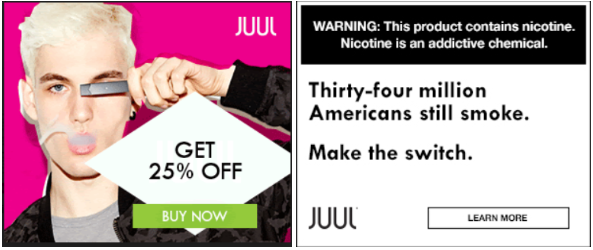[Guest post]: Digital advertising’s double-edged sword
Sometimes, implementing a new digital advertising strategy can be a double-edged sword.
The upside: Digital offers a real-time, efficient way to advertise a product, company, service, or otherwise to ideal consumers across devices (e.g. tablets, smartphones, laptops, and the like) that many already use daily. Digital is growing dramatically, and eMarketer projects it will surpass two-thirds of total media spending by 2023, so there’s much opportunity to be explored.
The downside: There’s a lack of transparency in digital advertising on all ends of the spectrum. Consumers are plagued by fake ads across websites and social platforms. Marketers will place ads programmatically and not truly know where on the internet they publish. Tech giants like Google and Facebook, which own a majority of the market, have recently been heavily criticized for shady ad practices (more on that soon).
In 2019, consumers require complete transparency from the companies they do business with — including where products are sourced, how and by whom products are made, and even how that company conducts its ad campaigns. The current industry landscape explains why this lack of transparency exists, and what marketers can learn from it.
Behind the smoke and mirrors: Juul’s marketing crisis
In comparison to the overall advertising industry, digital ads are in their infancy, so companies are still learning the best ways to reach the right subset of customers. More than that, the Federal Trade Commission (FTC) has increased regulations for the ad industry that dictate what brands can advertise, where, and what they can say about their products.
Case in point: Juul, the nicotine e-cigarette creator, allegedly illegally marketed its products to minors and failed to warn consumers about their dangers. Take a look at these two ads from 2014 (left) and 2019 (right) respectively. Notice anything different?

Juul’s entire marketing strategy has changed to comply with regulations around transparency. The company’s web ads five years ago were colorful and targeted toward Gen Z and Millennials. Today, its ads are black-and-white with a General Surgeon’s warning. Its video ads are geared toward 40+ somethings looking to switch from cigarettes to a “better” alternative.
Some lawsuits against the company today ask Juul to again change its marketing practices to become even further transparent as the “switch” from cigarettes to Juul is actually not a healthy one.
The lesson: Understand the core regulations for advertising in your industry, and how they differ across industries. Ensure your ads are compliant with FTC marketing and ad regulations before publishing any part of a campaign to avoid a Juul-like scandal.
The digital duopoly
Also dominating the ad landscape in 2019 are Facebook and Google, following a year of literal trial-and-tribulation. The two behemoths comprised 60% of the digital ad industry in 2018 or roughly $65 billion in combined revenue. At the same time, critics suggest the companies are monopolizing the ad industry.
Both companies have been plagued by scandal. In the last year alone, Google has been under fire for anti-competitive conduct as its acquired a host of companies to support its ad business, including DoubleClick in 2008, AdMob in 2010 and Admeld Inc. in 2011. Google has also stopped rival data management platforms from operating across its ad networks.
Federal regulators also imposed a $5B fine on Facebook after finding the company continuously used deceptive disclosures and account settings to lure users into sharing personal information, which was then used to show them highly targeted ads.
Despite the issues, the pair are cooperating with new measures to increase transparency with advertisers, publishers, users, and others across the board. While Facebook has been tightening its rules for political advertisers and showing users how to opt-out of ads, Google proposed new ad industry standards around consumer data collection.
The lesson: It’s never too late to start implementing measures to enforce transparency. The first step is creating an internal set of rules that guide your ad strategy, and ensuring all players across your ad supply chain are compliant.
Don’t fall on your sword: Ensuring transparency
Marketers can easily find themselves on the right side of digital advertising’s double-edged sword. Pay attention to ad compliance to ensure your company isn’t ensnared in scandal, and be as transparent with your audience as possible.
Bottom line: Stay compliant, stay transparent, and your ad strategy will do the rest.



